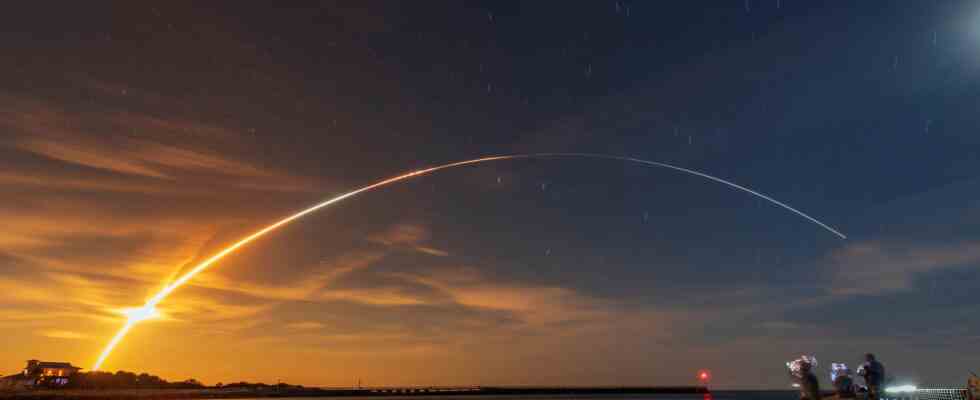Status: 11/16/2022 2:42 p.m
After several failed attempts, the “Artemis” mission started successfully in the morning. Around 90 minutes after liftoff, the “Orion” space capsule was released and is now on its way to the moon.
After months of delay, NASA is back on its way to the moon with a new spacecraft. The new giant SLS rocket – the most powerful ever built – took off from the Kennedy Space Center in the US state of Florida in the morning and brought an Orion capsule into space – this time still without a crew. With the “Artemis I” mission, NASA wants to prepare for the return of humans to the moon.
Three-stage mission
Around 90 minutes after launch, the unmanned space capsule “Orion” separated in order to enter orbit around the moon. It is now “on its way to the moon,” announced NASA manager Jim Free. The space capsule, in the construction of which German companies were also involved, is to orbit the Earth’s satellite for 25 days and come within almost 100 kilometers of its surface.
The flight is considered a precursor to NASA being able to send people to the moon again for the first time in half a century after the last Apollo mission. If successful, astronauts should fly around the moon again for the first time in 2024 on the follow-up mission “Artemis II”. At the earliest, people should land on the moon again with “Artemis III” in 2025. In addition, outposts are to be built on the moon and in its orbit, also as a basis for a later Mars mission.
Moon mission has started: Uwe Gradewohl, SWR, explains the special features of the rocket and spaceship
tagesschau24 10:00 a.m., 16.11.2022
“Orion” returns on December 11th
The space capsule will also deploy ten research satellites to explore the ice deposits at the moon’s south pole. Astronauts could land there in 2025. The space capsule is scheduled to return to Earth on December 11 and land in the Pacific.
“Artemis I” has no people on board yet, but two dolls – or “astronaut phantoms”, as the German Aerospace Center (DLR) calls them: “Zohar” and “Helga”. It is a project with German and Israeli participation. It is being tested whether a protective vest developed in Israel can effectively protect a female body in particular from dangerous space radiation.
Start postponed several times
The launch of the mission was originally planned for late August. However, it was repeatedly postponed due to technical problems and poor weather conditions. This time, too, there were delays shortly before the start: About four hours before, technicians on the launch pad had to close a leaking fuel valve on the launch vehicle for a short time.
Almost three quarters of an hour after the launch window opened, the rocket finally lifted off at 01.48 a.m. (local time, 07.48 a.m. CET). “What you did today will inspire generations to come. Thank you!” NASA Launch Manager Charlie Blackwell-Thompson cried to her cheering teammates. An estimated 100,000 onlookers gathered at Cape Canaveral on Florida’s east coast to witness the rocket launch.
To the moon and beyond
Fifty years after the last Apollo mission put humans on the moon in 1972, the successful Artemis launch heralds a new NASA strategy. Most recently, the US space agency had focused on flights in the immediate vicinity of the earth and to the International Space Station ISS.
Moon mission Artemis has started
Ralf Borchard, ARD Washington, 11/16/2022 8:58 a.m

